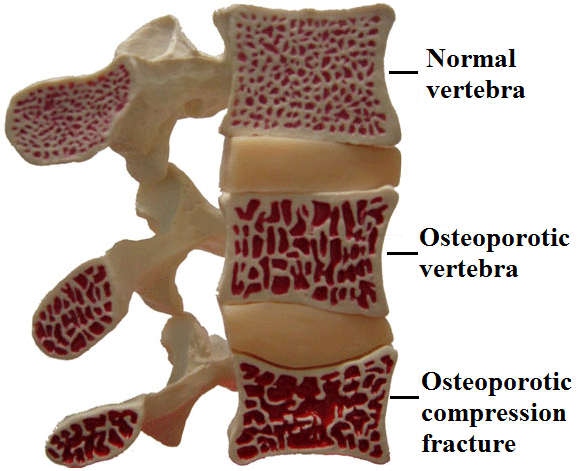Spinal fractures caused by trauma represent a serious orthopedic injury. Fractures that occur as a result from a high velocity accident are most commonly in the mid to low back. High velocity accidents are associated with trauma from motor vehicle accidents, a fall from height, or sporting accidents. Patients with high energy trauma or who lose consciousness require urgent emergency evaluation and treatment. The most common symptom of a spinal fracture is moderate to severe pain in the back that is increased with movement.
Fractures of the neck usually occur as a result of high energy trauma and are uncommon in other situations. There are seven bones in the neck and a break in any of those bones may be referred to as a “broken neck.” Any fracture in the neck has serious consequences because the spinal cord runs through the center of the cervical vertebrae. Damage or injury to the spinal cord can result in paralysis or death. All patients with trauma who develop cervical fractures should be evaluated in an emergency room setting.
FRACTURES :
Low Energy Fractures
People can develop spinal fractures unrelated to trauma; they usually have weakened bones from osteoporosis, tumors, or other medical conditions. Fractures that occur during daily activities are most commonly associated with conditions that may weaken the bone including osteoporosis, spinal tumors or spinal infections. For patients with low energy fractures due to osteoporosis these fractures are called a compression fracture. Treatment options include observation, bracing, and pain management. For some patients a minimally invasive procedure including vertebroplasty and kyphoplasty may improve pain and help to prevent further compression.
Types of Spinal Fractures
There are several types of spinal fractures based on pattern of injury and the extent of spinal cord injury. Below are the more common fractures.
Compression Fracture: This is often caused by osteoporosis or a tumor and rarely has spinal cord or nerve involvement. The front of the vertebra fractures and loses height however the back, posterior, part remains stable. It can be painful or asymptomatic and is usually a stable fracture.
Axial Burst Fraction: This is usually caused from a fall from a significant height, landing on the feet. The vertebra loses height on both the front and back side; depending on the stability of the fracture this may require surgery.
Chance Fracture: This fracture is known as a “seat-belt injury” and is caused by a violent forward flexed injury. The vertebra is pulled apart, often from a car accident where the upper body is pulled forward while the pelvis is stabilized by a lap only seat belt


PREVENTION
Prevention from high impact accidents can save your life. Always wear a seat belt when riding in a car. Always wear protective equipment when playing sports, riding bicycles, motorcycles or even horses. Obey all regulations in place for your safety. Never dive head first into shallow pool or swimming area.
TREATMENT
Treatment for spinal fractures will depend on the location and type of fracture as well as other the amount of neurologic compression. Minor fractures can be treated with cervical bracing. More complex fractures or fractures with spinal cord compression may require traction, surgery, or some combination of the above. For patients with neurologic compromise or unstable fractures, surgical intervention may be appropriate in order to stabilize the fracture, remove any nerve compression and assist with healing. For most patients, non-operative treatment is appropriate. Rehabilitation is an essential part to the treatment plan once the spinal fracture has healed. Rehabilitation allows patients to reduce pain and minimize disability with a hopeful full return to their functional level before the injury.

Post a comment